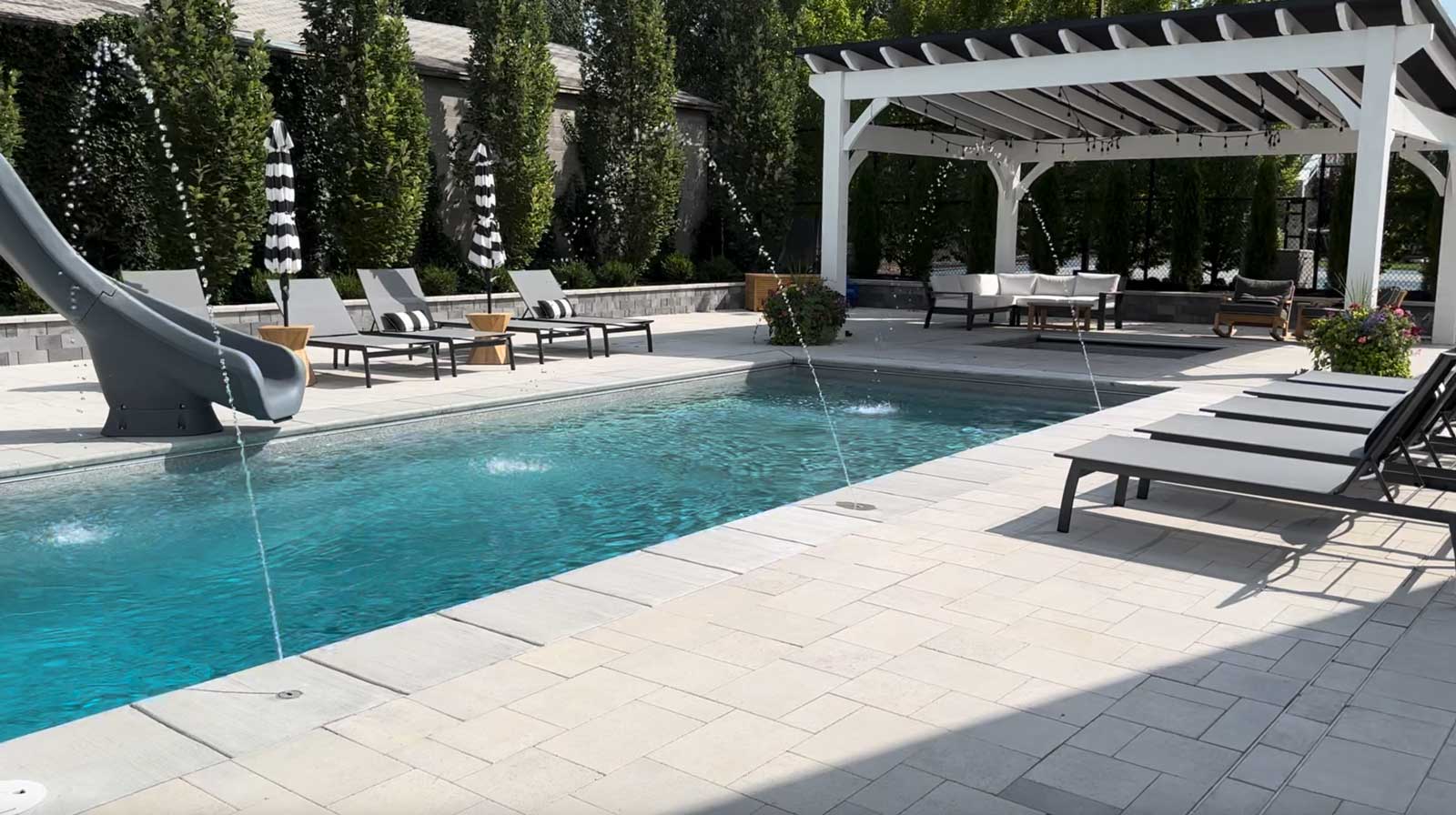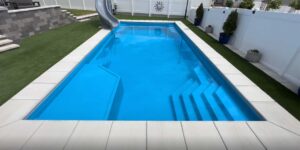Pavers around a swimming pool not only enhance its aesthetic appeal but also provide a functional and comfortable outdoor space. However, the cost and practicality of selecting, purchasing, and installing pavers require careful consideration. Below are some helpful tips to ensure you make informed decisions when planning pavers for your pool area.
Tip #1: Take Advantage of Discounts
The cost of pavers for a large pool patio can quickly add up, but there are ways to save money:
- Bulk Discounts: Many paver installers or landscapers purchase pavers in bulk and may pass on these savings to you. When getting quotes, ask if they offer any discounts through their suppliers.
- Color Alternatives: Popular paver colors may be priced higher, but similar shades or less popular options can offer a comparable look at a lower price. Exploring a broader range of colors could significantly reduce costs without sacrificing style.
Tip #2: Choose Paver Colors Wisely
Utah’s hot summer temperatures can make certain paver colors uncomfortable to walk on, especially barefoot:
- Lighter Colors: Opt for lighter-colored pavers, such as beige, light gray, or cream. These reflect more sunlight and stay cooler compared to darker options.
- Texture and Finish: Consider pavers with a non-slip surface or a cooler-to-the-touch finish to enhance safety and comfort for both kids and adults.
- Durability in Heat: Ensure the material is resistant to warping or discoloration under prolonged exposure to intense sunlight.
Tip #3: Vet Your Paver Contractor Thoroughly
Selecting the right contractor is crucial to ensure a durable and visually appealing installation:
- Detailed Estimates: Ask for a comprehensive breakdown of costs, including potential extras, so you can avoid surprise charges.
- Site Preparation: Inquire about the amount of soil that will be removed and the type of equipment they will use for compaction. Proper preparation is essential for long-lasting pavers.
- Base Materials: Ensure the contractor specifies the materials they will use to support the pavers, such as gravel, sand, or geotextile fabric, which provide stability and prevent shifting.
- Grout and Joint Options: Discuss the type of grout or joint material they’ll use, especially around the pool, where water exposure and movement are factors.
- Drainage Plan: Ask about the slope of the pavers to ensure proper drainage away from the pool. Confirm whether additional drainage systems will be included, such as channel drains or French drains, to prevent water pooling.
Additional Tips for Poolside Pavers
- Maintenance Considerations: Select pavers that are easy to clean and maintain, especially those resistant to stains from pool chemicals or outdoor debris.
- Environmental Impact: If sustainability is a priority, explore eco-friendly paver options made from recycled materials or permeable pavers that allow water to pass through, reducing runoff.
- Longevity and Warranty: Ask about the lifespan of the pavers and whether the manufacturer or contractor offers a warranty on the product and installation.
By carefully choosing your pavers and working with a reliable contractor, you can create a beautiful, comfortable, and durable poolside patio that enhances the value of your outdoor space while meeting your practical needs.


